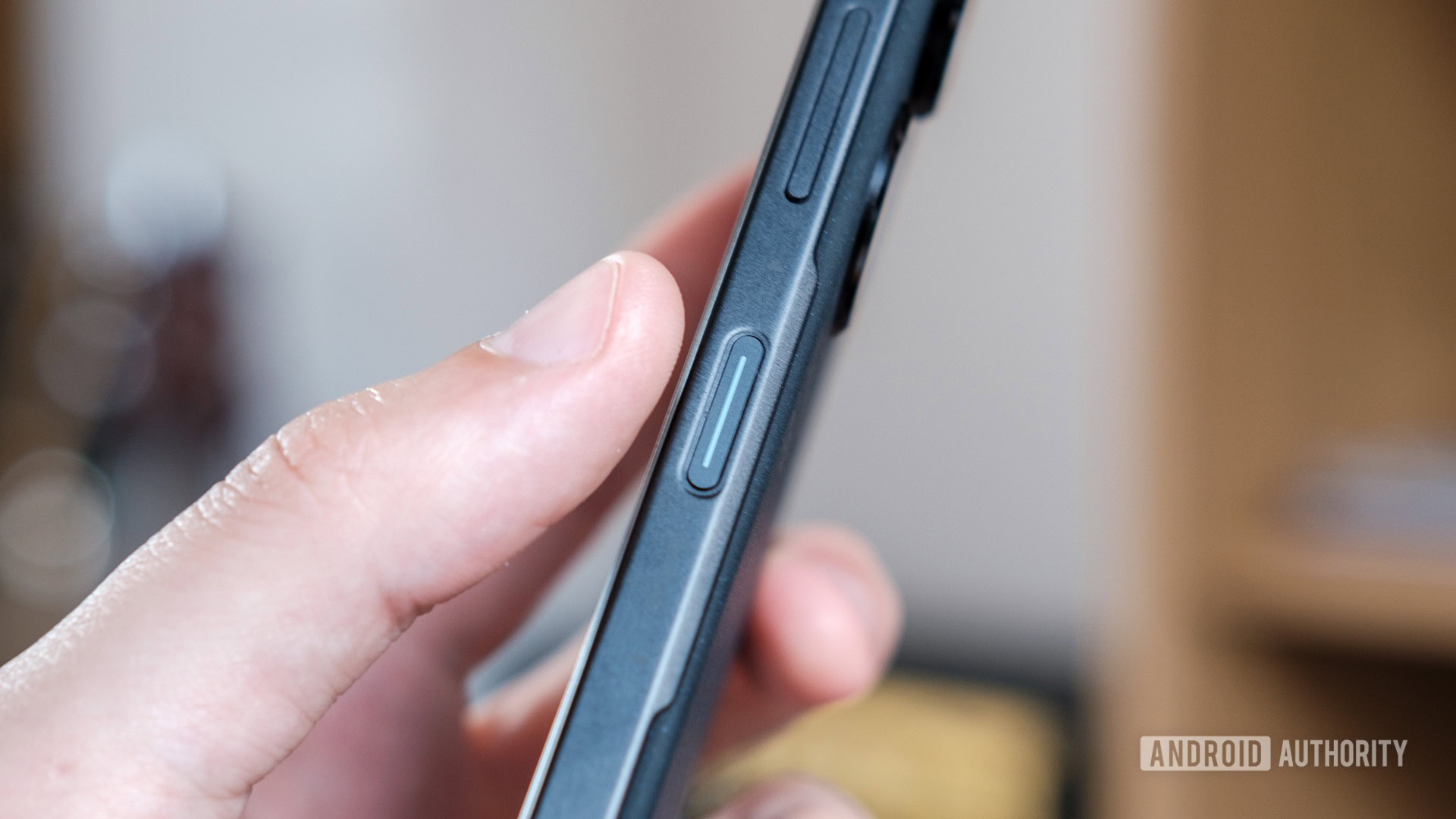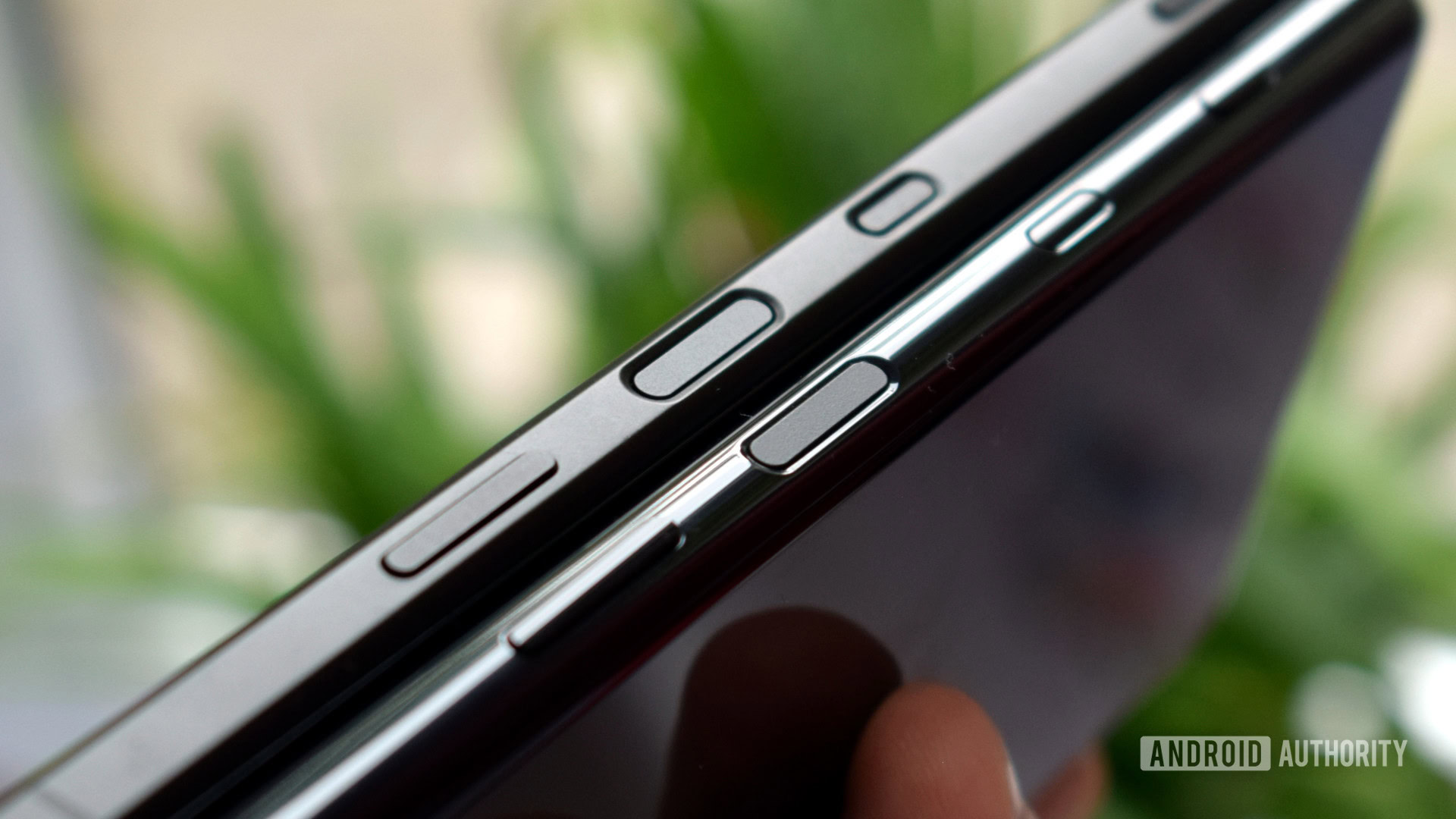Affiliate links on Android Authority may earn us a commission. Learn more.
Forget in-display, this is the golden age of side-mounted fingerprint scanners
July 26, 2023

In just a few short years, in-display fingerprint scanners have gone from the exciting cutting edge of the best Android smartphones to being taken for granted. Button-mounted security, by comparison, just isn’t seen as that exciting, but we’re actually living through the technology’s golden age. Having spent time with the ASUS Zenfone 10 and Sony Xperia 1 V (and their predecessors), I’m convinced that side-mounted fingerprint scanners are the superior implementation, at least currently. Let me explain.
They’re faster, for one. Miles faster. Not just in terms of unlocking but enrolling too. The Zenfone’s scanner is so quick I physically can’t take my finger away fast enough for it to fail. We rated the POCO F4’s side-mounted scanner really highly in this regard too. Sony’s Xperia 1 IV was not quite as snappy but is still nippier and more accurate than so many of the in-display scanners I’ve used in recent years.
The Zenfone 10's power button scanner is so quick I physically can't take my finger away fast enough for it to fail.
Compared to the glacial Google Pixel 6, the experience is night and day. Google addressed its fingerprint scanner problems with the Pixel 7 series, but there’s still a noticeable lag compared to the fastest in the business. In-display variants are also notoriously finicky with wet (and dry) fingers as well as screen protectors, which isn’t the case for physical scanners.
Which fingerprint scanner style do you prefer?
There are other advantages too. Scanners hidden in the power button are equally discrete, but you also always know where they are. The in-display variety is obviously well hidden, but guessing exactly where the reader is when the screen is off can be an issue. The scanning areas are often quite small too, you have to be precise to avoid rescanning; in comparison, the power button is effortless to find. Likewise, cheap optical scanner types (I’m badmouthing you again, Pixel) cast a blinding light while reading in the dark. No one likes having their retinas scorched just to check WhatsApp.

Button-based fingerprint scanners can be smarter too. ASUS’ Zenfone 9 and 10, for example, boast mappable gestures to launch apps quickly, drop the notification shade, trigger Google Assistant, and more. A double tap of the button, press and hold, or quick swipe up or down expands quick access to your most used features without clogging up your lock or home screen. It’s the sort of simple and obvious feature that adds tons of value incredibly simply, yet seems to have evaded flagship manufacturers who are too busy chasing the latest technological fad.
Fingerprint gestures aren’t new, of course. Cluncky gestures were popular back when phones still had some semblance of bezel to house chin-based scanners and when manufacturers thought the back was the best place to put them. The original Pixel let you drop the notification shade with a swipe on the phone’s back, for instance. But embedding them within the existing power button is brilliantly elegant and could, in theory, be available on every single smartphone regardless of its design identity.
Button-mounted fingerprint gestures are so elegant, every phone should have them.
This isn’t to say there aren’t some superb in-display fingerprint scanners on the market, though. The vivo X80 Pro’s 3D ultrasonic sensor (pictured below) stands out as the best current example. With a huge scanning area, one-touch fingerprint enrolment, and app-launch shortcuts, it’s intuitive, smart, and clearly a step above what’s currently on the market, even in the premium flagship space.
While an exciting glimpse into the future of in-display technology, the X80 Pro (and newer X90 Pro) remains an outlier in the world of in-display tech. Hopefully, we’ll see more phones with this scanner setup in the near future, but the cost, internal space trade-offs, and display support might remain a barrier to entry for some time. Certainly, as far as the mainstream is concerned.
A side-mounted fingerprint sensor is a better marriage of form and function.
Not every button-embedded fingerprint scanner is great, of course, but the modern era seems to have nailed the formula. Whether you’re spending ultra-premium money with the Xperia 1 V or budget cash for the POCO F5, a fast, reliable, and secure experience is within reach. Meanwhile, ASUS’ Zenfone has convinced me that fingerprint gestures are so useful yet so simple that every smartphone should have them. If that means stepping back from in-display fingerprint scanners for a couple of years until the tech catches up, then so be it. It’s simply a better marriage of form and function.
Thank you for being part of our community. Read our Comment Policy before posting.